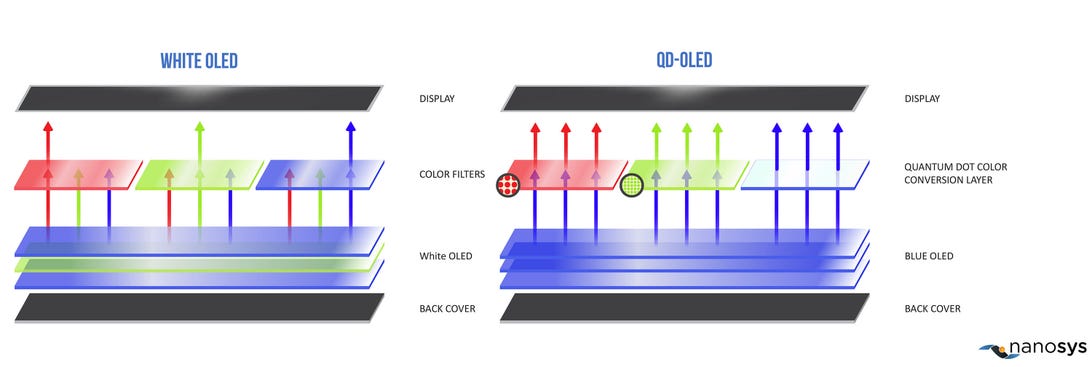Samsung QLED TVs like the one pictured here perform well, but Samsung’s upcoming OLED models should be even better.
Samsung
This story is part of CES, where CNET covers the latest news on the most incredible tech coming soon.
Get ready for a new OLED TV player. Samsung is the top-selling TV brand worldwide and known for its QLED televisions, but they’ve never performed as well as OLED TVs made by rivals like LG. At CES 2022, Samsung entered the game with a new type of TV called QD Display, which relies on OLED technology.
The TV was not announced in an official press release like Samsung’s other 2022 models, instead appearing as a 2022 Best of Innovation award winner at CES.
The text of the award reads in part “Samsung’s 65-inch QD-Display TV is the world’s first true RGB self-emitting Quantum Dot OLED display…combining the contrast levels of RGB OLED with the color and brightness of quantum dots.” Other features mentioned include four HDMI 2.1 inputs, a 144Hz refresh rate, a “Neo Quantum Processor” and immersive sound.
At the moment other details about the TV, including pricing, availability, images or screen sizes beyond 65 inches, are unclear. CNET reached out to Samsung for additional details and a representative replied “All I can say at this time is that we’ll have more to share about the 2022 TV lineup in the next several weeks,” adding that the final name of the TV has yet to be determined.
The introduction of OLED TVs made by Samsung could have big implications for the high-end TV market. A company called LG Display currently manufactures all of the OLED TVs available today, and supplies them not only to LG Electronics but also to Sony, Vizio, Philips, Panasonic and others worldwide. QD-Display panels are manufactured by Samsung Display and could be sold to not only Samsung but other brands, too. More manufacturers and brands could mean increased competition and lower prices overall.
Samsung Display first announced its Quantum Dot OLED ambitions in 2019 with an $11 billion investment in a new factory in Korea. Since then rumors have pointed to the technology finally arriving in 2022, and Samsung is the first company to confirm it.
Read more: Samsung’s QD-OLED TV might be here very soon. Here’s everything we know
OLED is the consensus gold standard among high-end TVs, with perfect black levels, no stray illumination and excellent off-angle viewing. QD-OLED combines organic light-emitting diodes and quantum dots. With the current version of OLED, yellow and blue OLED materials create “white” light and filters mix in other colors. QD-OLED uses blue OLEDs to create light and quantum dots to convert some of the blue into red and green.

On the left, the current version of OLED. “White” in LG’s case being a combination of blue and yellow OLED materials. On the right is how QD-OLED works, using only blue OLED, and then converting some of that with red and green quantum dots.
Nanosys
The benefits, according to Samsung Display, include better color overall, improved viewing angles and the same perfect black levels that conventional OLED is known for.
Current OLED TV panels manufactured by LG Display come in a wide variety of sizes and sale prices on OLED TVs have fallen below $1,000 for the smallest, least-expensive examples. I don’t expect Samsung’s QD-OLED TVs to offer as much variety or get as affordable, especially in their first year, and I’d be surprised if the picture quality improvement, if any, blows me away. There’s also the question of how the next technology holds up over time or handles potential burn-in.
That said, the mere presence of another kind of OLED TV, and the competition it brings, is good news for people who care about picture quality.
Samsung made numerous other TV announcements in advance of CES 2022, including its latest Neo QLED, MicroLED and The Frame models, a gaming hub with access to cloud services and a remote that harvests RF waves to recharge.